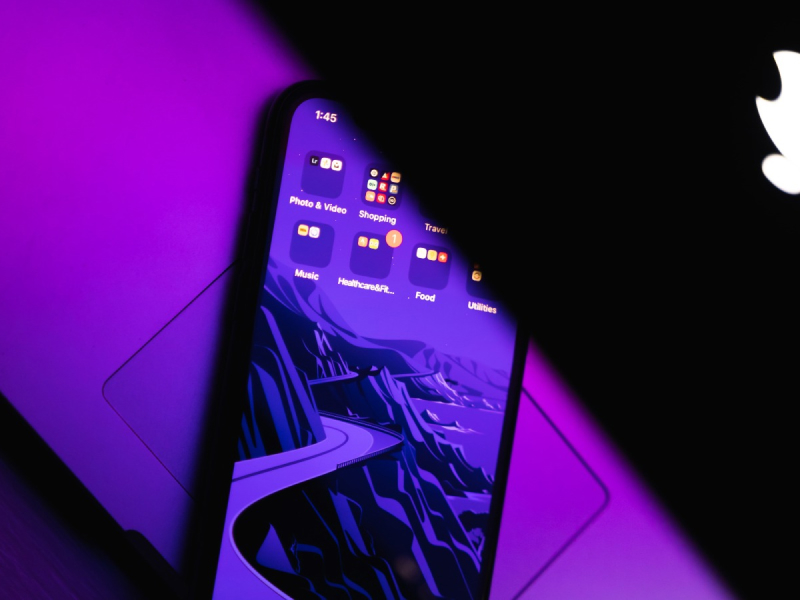In 2023, the number of global IoT connections is expected to grow by 16% to 16.7 billion active endpoints, with global IoT adoption rates averaging around 90%. This unprecedented growth is transforming how businesses operate, creating new pathways to engage customers, optimize operations, and generate revenue. The IoT revolution is connecting billions of devices, from smartphones to industrial machines, creating a network that generates valuable data, and substantial opportunities for vigilant organizations.
Mobile apps serve as the interface for this network, empowering users to control, manage, and interact with IoT devices and make data-driven decisions. With the integration of 5G networks, mobile app functionality is bursting with opportunity, furthered by the ballooning demand for mobile, IoT & cloud services in industries like manufacturing, healthcare, and retail.
Keeping tabs on the latest trends and innovations in IoT & mobile app development provides organizations with powerful insights into emerging technologies, consumer preferences, and market shifts. Taking steps to understand and capitalize on these trends can help market leaders make informed strategic decisions, whether it be investing in new technologies, reevaluating current operations, or driving into new market opportunities.
Mobile apps are the IoT gateways of the future
In traditional ecosystems, IoT gateways acted as the middlemen between sensors, actuators, and the cloud, collecting data from IoT devices, processing it, and sending it to a centralized IoT platform. Essentially, IoT gateways serve as a bridge between the device and the cloud, handling tasks like data filtering, security protocols, and device management.
Recently, there’s been an industry-wide shift toward using mobile apps to perform these functions that were once exclusive to IoT gateways. With the growing capabilities of mobile devices and cloud integrations, these powerful apps can now handle data collection, processing, and even some levels of analytics. This change is facilitated by the mobile device’s inherent connectivity options, such as Wi-Fi and Bluetooth, for direct interaction with IoT devices.
IoT-integrated mobile apps make financial and operations sense
One of the most compelling arguments for IoT-integrated mobile apps is the enormous potential for cost savings. Eliminating the need for separate gateway hardware can significantly reduce initial setup costs. Additionally, managing devices becomes more straightforward when done directly through a mobile app, reducing the need for specialized training or personnel. From a user’s standpoint, having a single interface on a mobile device to control various IoT devices delivery a more cohesive, user-friendly, and memorable user experience.
The cost savings from eliminating gateway hardware and simplifying device management leads to a quicker return on investment. Moreover, an improved user experience lends to higher customer satisfaction rates, which in turn results in customer loyalty and potentially revenue increases in the long-term.
What to watch out for when going mobile
Mobile devices are often more susceptible to security breaches when compared to specialized IoT gateway hardware. This vulnerability can potentially expose sensitive data and risk handing control over connected IoT devices to unauthorized sources. To mitigate these risks, savvy organizations should invest in robust security measures, such as advanced encryption techniques and multi-factor authentication, to protect both data and device access.
Another key concern here is the limitation on data transfer rates when using mobile devices. Mobile apps might struggle to handle real-time data processing if they’re receiving large volumes of data from multiple connected IoT devices – a growing concern considering the rapid growth of IoT devices worldwide. This can lead to delays in data analysis and decision-making, which could be detrimental in scenarios that require immediate action, such as emergency healthcare situations or manufacturing processes.
How Samsung and Philips are setting the pace
Companies like Samsung and Philips are already making strides in capitalizing on this mobile as the future of IoT integration. Samsung SmartThings, for example, lets their users control smart home devices directly from their mobile app, bypassing the need for a separate gateway. Similarly, the Philips Hue lighting system can be entirely controlled via its mobile app, offering both cost savings to the company and a more exceptional and memorable user experience.
Strategic focus on IoT app security
The issue of cybersecurity has moved from being a technical concern to a strategic imperative for organizations striving for future-readiness. As IoT mobile apps continue to proliferate, they become attractive targets for cybercriminals. The stakes are high, especially when these apps are used to control critical infrastructure or handle sensitive data.
To counteract these risks, there’s a growing trend toward incorporating advanced security measures directly into IoT mobile apps. One of the key advancements is the use of robust data encryption techniques. By encrypting data at rest and in transit, organizations can significantly reduce the risk of unauthorized access. Furthermore, secure data flow mechanisms are being implemented to ensure that data moves safely between devices, apps, and cloud storage solutions.
This focus on enhanced security is particularly crucial for industries like healthcare and finance, where the sensitivity of the data is exceptionally high. In healthcare, patient records and real-time health monitoring data must be kept secure to maintain patient confidentiality and comply with regulations like HIPAA. In finance, customer financial information and transaction data are prime targets for cybercriminals, making robust security measures indispensable.
Competitive advantage: Enhanced security as a market differentiator
Beyond the obvious benefits of risk mitigation, enhanced security can also serve as a significant market differentiator. Customers are becoming increasingly savvy about cybersecurity and are more likely to trust and invest in companies that can demonstrate a commitment to security. A study by Centrify found that 65% of data breach victims lost trust in an organization as a result of the breach – with this percentage being even higher in developed countries. Therefore, organizations that prioritize advanced security measures in their IoT mobile apps can not only protect themselves but also gain a competitive edge.
Real-time analytics and decision-making
Real-time analytics in IoT mobile apps serve as the backbone for immediate data interpretation and action. These analytics tools collect and analyze data from various connected devices, sensors, and user interactions. The immediate nature of this data processing gives organizations valuable insights into what’s happening in their operations at any given moment – which is particularly important in environments where timely decisions can make a significant difference, such as healthcare and retail.
The analytics not only collect data but also interpret it in a way that facilitates immediate decision-making. For example, if a sensor in a healthcare setting detects abnormal vital signs, the mobile app can instantly alert medical professionals to take appropriate action. Similarly, in a retail setting, real-time analytics can track inventory levels and customer behavior, enabling immediate restocking or personalized marketing efforts. The key here is that the data is not just being collected; it’s being used to make decisions that can be implemented instantly.
Industry-specific applications of real-time analytics
In healthcare, real-time analytics can be used for remote monitoring of patients. Wearable devices can send vital statistics to a mobile app, which can then alert healthcare providers if an intervention is needed. This not only improves patient outcomes but also reduces the need for in-person visits, thereby cutting costs.
In retail, real-time analytics can analyze customer behavior and preferences to offer personalized recommendations. For example, if a customer often buys a particular type of product, the mobile app can recommend similar items, possibly leading to increased sales and customer satisfaction.
Lessons from Fitbit and Ring Doorbells
Fitbit is an excellent example of how real-time analytics in a mobile app can impact healthcare. The app collects data on physical activity, sleep patterns, and heart rate, providing immediate feedback that can be used for health monitoring and lifestyle changes.
Ring Doorbells, on the other hand, show the power of real-time analytics in a home security context. The mobile app receives real-time video feed and sensor data, allowing homeowners to take immediate actions like speaking through the device to a visitor or alerting the authorities.
Cross-platform compatibility
Today’s leading IoT mobile apps need to be compatible with the two major operating systems: Android and iOS. This isn’t just about reaching a wider audience; it’s about ensuring that your IoT solutions are accessible to all potential users, regardless of their device preference. This is especially important for businesses aiming to maximize customer satisfaction and experience.
To address this need, developers are increasingly turning to cross-platform development tools. These tools allow for the creation of apps that can run seamlessly on both Android and iOS, without the need to write separate code for each. This approach not only speeds up the development process but also simplifies maintenance, as updates can be rolled out for both platforms simultaneously.
Opportunities – Elevating customer satisfaction and experience
The benefits of cross-platform compatibility are manifold. Most notably, it leads to increased customer satisfaction. When users find that an app is available and fully functional on their device of choice, their overall experience is enhanced. This positive experience can translate into higher engagement rates, more in-app purchases, and better reviews, all of which contribute to a stronger brand image.
Challenges – User interface and development complexity
However, achieving cross-platform compatibility is not without its challenges. One of the primary hurdles is maintaining a consistent user interface across both platforms. Android and iOS have their own design guidelines and user expectations, making it a complex task to create a unified yet platform-specific experience. Additionally, the development process itself can become more complicated when striving for compatibility, as developers must account for the nuances of each operating system.
Real-world example: Tesla
A prime example of successful cross-platform compatibility is the Tesla mobile app, available on both Android and iOS. The app allows Tesla owners to control various aspects of their vehicle and monitor its status, all from their mobile device. By offering the app on both major platforms, Tesla ensures a high-quality user experience for all its customers, irrespective of their mobile operating system.
Next steps: Getting your organization future-ready
With IoT mobile apps replacing gateways, enhanced security measures, real-time analytics and decision-making, and innovations in cross-platform compatibility come with far-reaching implications. These trends are breaking open new avenues for cost savings, improved customer experience, and robust data management. Despite this rapid transformation, the practical implementation of these technologies and strategic tips is not without its challenges.
Organizations need to bring on skilled expert teams and guidance to build and implement future-ready custom IoT mobile apps. Whether it’s dealing with data encryption complexities or ensuring seamless user experience across Android and iOS platforms, the road to capitalizing on these trends is riddled with technical and strategic hurdles – and this is where profound opportunities lie.
As we look towards the future, it’s important to consider the global market differences in IoT mobile app development. What works in one region may not necessarily be effective in another due to varying regulations, customer behaviors, and technological infrastructures. Therefore, a one-size-fits-all approach is unlikely to yield optimal results. Organizations need to adopt a more nuanced, region-specific strategy to fully capitalize on the opportunities presented by these trends and technological shifts to push boundaries and become innovative and far-sighted industry leaders.





